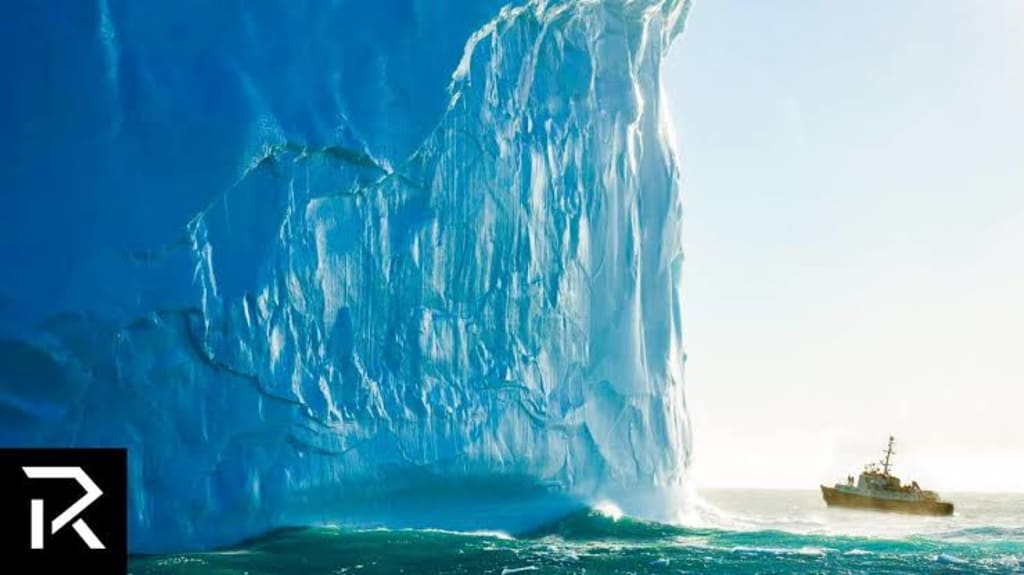Why We Are Not Allowed to Visit Antarctica
Unveiling Antarctica: A Frigid Wilderness of Natural Wonders and Environmental Delicacy

Venturing into Antarctica: A Frozen Frontier of Natural Wonders and Delicate Balance
The allure of witnessing polar bears frolicking on ice floes and the mesmerizing dance of the Aurora Borealis draws many to dream of visiting the Arctic. However, if you're thinking about exploring Antarctica, you might need to reconsider your travel plans. Located at the South Pole, Antarctica is a remote and frigid continent covered mostly by ice, making it one of the most challenging and least visited places on Earth.
The Fragile Environment of Antarctica:
Antarctica is an untouched wilderness with an incredibly fragile environment that needs protection. The continent lacks any native human populations, creating a delicate ecosystem that could be easily disrupted by human activity. To safeguard this pristine environment, an international agreement called the Antarctic Treaty was established. This treaty prohibits any harmful human activity and promotes Antarctica's use for peaceful and scientific purposes only.
The Challenge of Visiting Antarctica:
Despite Antarctica not being a heavily guarded fortress, gaining permission to visit is not as simple as booking a vacation. Travelers, especially U.S. citizens, must go through a rigorous process and adhere to strict guidelines to ensure the preservation of the continent's unique ecosystem. Taking souvenirs or disturbing wildlife is strictly prohibited to maintain the delicate balance of this icy realm.
The Harsh Reality of Life on Antarctica:
Technically, there are no laws preventing people from living on Antarctica permanently. However, this inhospitable environment is unsuitable for human habitation. With temperatures plunging to a bone-chilling negative 76 degrees Fahrenheit, survival without the proper equipment and experience is nearly impossible. Moreover, the nearest piece of land is over a thousand miles away, rendering any potential inhabitants entirely isolated from the rest of the world.
Unraveling Antarctica's Discovery:
Unlike other places with ancient civilizations, Antarctica remained untouched by native human populations. The ancient Greeks knew about the continent and called it "antarctos," meaning opposite the bear, referring to the constellations visible only in the northern hemisphere. Captain James Cook crossed the Antarctic Circle in the late 1700s, providing crucial insights into the region's challenging conditions.
The Frozen Desert of Antarctica:
Contrary to expectations, Antarctica is classified as a desert due to its lack of precipitation. The meager average rainfall of just over 0.4 inches in the past 30 years sets it apart as one of the driest places on Earth. The desert designation depends on the absence of precipitation, not the typical dunes and sizzling heat we associate with deserts. While it may lack cacti and camels, it compensates with extreme cold, making it one of the coldest, windiest, and highest places on the planet.
The Quirky Time Dilemma:
Antarctica's unique geographical location makes it a conundrum when it comes to time. All lines of longitude converge at a single point at the South Pole, leading to the absence of a designated Antarctica time zone. Scientists and researchers typically follow the time zone of their departure country, leading to interesting time coordination challenges among the various international stations.
The Vibrant Life in Antarctica:
Contrary to its harsh conditions, Antarctica teems with life, making it a captivating destination for scientists and wildlife enthusiasts. The continent is home to billions of krill, attracting numerous seals and countless penguins. Penguins, with their streamlined bodies and impressive swimming abilities, create mathematically precise huddles to brave the frigid temperatures.
Emperor penguins, the largest penguin species, can jump up to 120 inches, showcasing their impressive agility. Marine mammals, including seals and whales, also thrive in the Cool Waters of the Southern Ocean, adding to the captivating ecosystem of Antarctica
Note: This rewritten version incorporates the essence of the original article while presenting the information in a more structured and concise manner. The focus remains on the unique features of Antarctica, its delicate ecosystem, and the reasons why visiting this continent requires careful consideration. The article also highlights Antarctica's vibrant wildlife and its significance as a scientific frontier.
About the Creator
Enjoyed the story? Support the Creator.
Subscribe for free to receive all their stories in your feed. You could also pledge your support or give them a one-off tip, letting them know you appreciate their work.






Comments
There are no comments for this story
Be the first to respond and start the conversation.